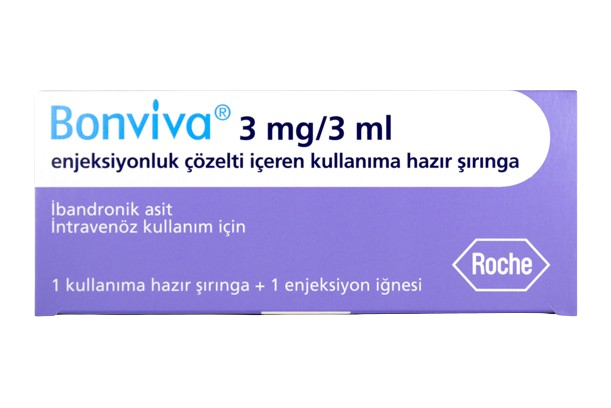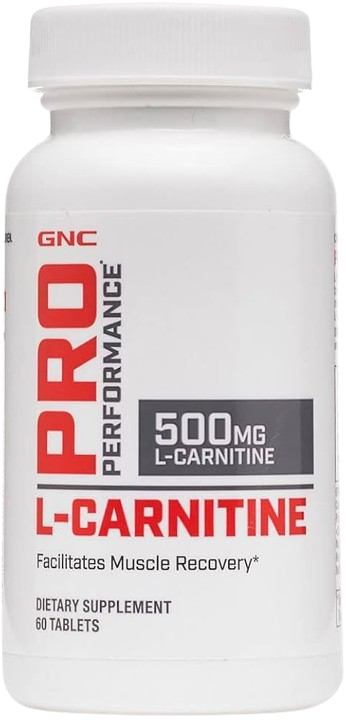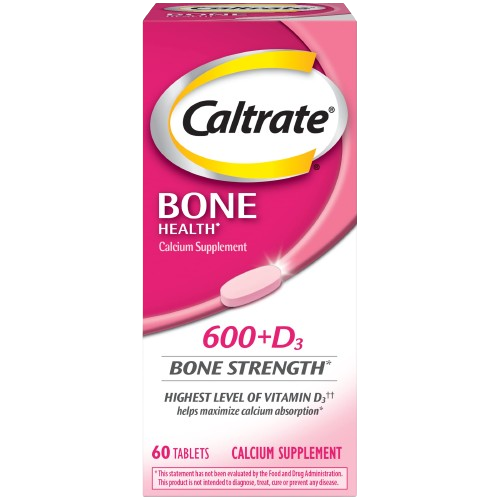Bonviva (ibandronic acid) 3mg/3ml Injection Imported in Pakistan
Product Overview
Bonviva Injection
- Active Ingredient: Ibandronic Acid
- Dosage Form: Injection (3 mg in 3 ml)
- Packaging: Pre-filled syringe (1PFS x 3ml)
- Manufacturer: Roche Pakistan Ltd
- Category: Bisphosphonates
Indications
Bonviva is primarily indicated for:
- Treatment of Osteoporosis: Specifically in postmenopausal women at increased risk of fractures.
- Management of Bone Complications: Related to metastatic breast cancer and pathological hypercalcemia.
Administration Guidelines
- Dosage: Administered as an intravenous injection of 3 mg every three months.
- Administration Time: The injection should be delivered over 15 to 30 seconds.
- Supplementation: Patients should receive calcium and vitamin D supplements to support bone health.
Original price was: ₨15,000.00.₨12,000.00Current price is: ₨12,000.00.
Description
Product Overview
Bonviva Injection
- Active Ingredient: Ibandronic Acid
- Dosage Form: Injection (3 mg in 3 ml)
- Packaging: Pre-filled syringe (1PFS x 3ml)
- Manufacturer: Roche Pakistan Ltd
- Category: Bisphosphonates
Indications
Bonviva is primarily indicated for:
- Treatment of Osteoporosis: Specifically in postmenopausal women at increased risk of fractures.
- Management of Bone Complications: Related to metastatic breast cancer and pathological hypercalcemia.
Administration Guidelines
- Dosage: Administered as an intravenous injection of 3 mg every three months.
- Administration Time: The injection should be delivered over 15 to 30 seconds.
- Supplementation: Patients should receive calcium and vitamin D supplements to support bone health.
-
Key Benefits of Bonviva
- Reduces Fracture Risk: Bonviva has been shown to significantly lower the risk of vertebral fractures in postmenopausal women with osteoporosis. Studies indicate a reduction in new spine fractures by up to 62% compared to placebo.
- Bone Mass Improvement: The medication works by stopping further bone loss and promoting an increase in bone mass, which is crucial for maintaining bone strength and reducing fragility associated with osteoporosis.
- Management of Bone Complications: It is also effective in managing bone damage due to metastatic breast cancer and in controlling elevated calcium levels resulting from tumors.
- Convenient Administration: Bonviva is available in both oral and injectable forms, allowing flexibility in treatment options. The injectable form is administered once every three months, which can improve adherence to treatment regimens.
- Supports Healthy Lifestyle: Along with medication, adopting a healthy lifestyle that includes a diet rich in calcium and vitamin D, regular weight-bearing exercise, and avoiding smoking and excessive alcohol consumption can enhance the effectiveness of Bonviva.
Key Ingredients
- Active Ingredient: The primary active ingredient in Bonviva is Ibandronic Acid, a bisphosphonate that specifically targets bone metabolism to reduce the risk of fractures and improve bone density.
- Excipients: While the specific excipients may vary based on the formulation (tablet vs. injection), they generally include substances that aid in the stability and delivery of the active ingredient. For the injection form, the solution may contain sodium chloride for isotonicity and other stabilizers as per pharmaceutical standards.
-
Mechanism of Action of Bonviva (Ibandronic Acid)
Bonviva, containing ibandronic acid, acts primarily as a bisphosphonate, targeting the cells responsible for bone resorption, known as osteoclasts. Here’s a detailed overview of its mechanism of action:
- Inhibition of Osteoclast Activity: Ibandronic acid binds to hydroxyapatite, a component of the bone mineral matrix. This binding inhibits the activity of osteoclasts, the cells that break down bone tissue. By reducing osteoclast function, Bonviva decreases bone resorption, leading to a net gain in bone density.
- Reduction of Bone Loss: Osteoporosis occurs when the rate of bone resorption exceeds the rate of bone formation. By inhibiting osteoclasts, Bonviva slows down the loss of bone mass, which is particularly beneficial for postmenopausal women who experience increased bone turnover due to decreased estrogen levels.
- Improvement of Bone Density: Clinical studies have demonstrated that treatment with ibandronic acid results in increased bone mineral density (BMD) in the spine and hip over time. This increase in BMD correlates with a reduced risk of fractures, particularly vertebral fractures.
- Long-term Effects: The effects of ibandronic acid can persist even after discontinuation of therapy, as it remains incorporated in the bone matrix, continuing to exert its effects on bone metabolism.

Effect on Bone Density
- Increased Bone Mineral Density (BMD): Clinical studies indicate that Bonviva significantly increases BMD in the lumbar spine and hip. For instance, in a two-year study, patients receiving the Bonviva injection (3 mg every three months) exhibited a 6% increase in spine BMD and a 3% increase in hip BMD compared to baseline measurements. This was shown to be at least as effective as the oral formulation of ibandronic acid (2.5 mg daily), which resulted in a 5% increase in spine BMD and a 2% increase in hip BMD over the same period.
- Long-term Benefits: The effects of Bonviva on bone density are sustained over time. In studies, significant increases in BMD were observed at one year and remained consistent at the two-year mark. For example, 91.3% of patients receiving Bonviva had a lumbar spine BMD increase at one year, which increased to 93.5% by two years.
- Reduction in Fracture Risk: The increase in bone density directly correlates with a reduced risk of fractures. In one study, Bonviva treatment led to a 62% reduction in the risk of new spine fractures compared to placebo over three years, highlighting its effectiveness not only in increasing density but also in preventing fractures.
- Mechanism of Action: Bonviva works by inhibiting osteoclast activity, which are the cells responsible for bone resorption. This inhibition leads to a decrease in bone loss and an increase in bone mass, contributing to overall improved bone health.
Impact on Bone Density by Region
- Lumbar Spine:
- Studies have shown that Bonviva leads to a notable increase in bone mineral density (BMD) in the lumbar spine. In clinical trials, patients receiving Bonviva injections experienced an increase in spine BMD of approximately 6% over two years. This increase is crucial as it correlates with a reduced risk of vertebral fractures, which are common in postmenopausal women with osteoporosis.
- Hip:
- The impact on hip bone density is also significant, although slightly less pronounced than in the spine. In the same studies, the increase in hip BMD was around 3% with Bonviva injections over two years. While this increase is beneficial, the reduction in fracture risk at the hip is less documented compared to the spine, indicating that Bonviva is particularly effective in improving spine density.
- Femoral Neck and Trochanter:
- Bonviva has also demonstrated effectiveness in increasing BMD at the femoral neck and trochanter regions. The results from studies indicate that the BMD increases in these areas are comparable to those observed in the lumbar spine, contributing to overall bone health and fracture prevention.
Bonviva (ibandronic acid) is a nitrogen-containing bisphosphonate that exhibits a unique mechanism of action compared to other bisphosphonates, particularly non-nitrogen-containing variants. Here’s how Bonviva’s mechanism differs:
Mechanism of Action
- Nitrogen-Containing vs. Non-Nitrogen-Containing Bisphosphonates:
- Bonviva: As a nitrogen-containing bisphosphonate, ibandronic acid specifically inhibits the enzyme farnesyl pyrophosphate synthase (FPPS) in osteoclasts. This inhibition disrupts the mevalonate pathway, which is crucial for the post-translational modification (isoprenylation) of small GTPases that are essential for osteoclast function and survival. The result is the induction of osteoclast apoptosis, leading to a significant reduction in bone resorption.
- Other Bisphosphonates: Non-nitrogen-containing bisphosphonates, such as etidronate and clodronate, do not inhibit FPPS. Instead, they may form cytotoxic metabolites or inhibit protein tyrosine phosphatases after being incorporated into osteoclasts, which leads to bone resorption inhibition but through different pathways.
- Potency and Efficacy:
- Bonviva is significantly more potent than non-nitrogen-containing bisphosphonates. It is estimated to be approximately 2 to 500 times more potent than other bisphosphonates like risedronate, alendronate, pamidronate, and clodronate due to its structural attributes and the specific inhibition of FPPS.
- Binding Affinity:
- Like other bisphosphonates, Bonviva has a strong affinity for hydroxyapatite in bone, allowing it to be retained in the bone matrix. However, its nitrogen component enhances its binding and effectiveness in inhibiting bone resorption compared to non-nitrogen-containing bisphosphonates, which have a different mechanism of action and lower potency.
Key Precautions for Bonviva
- Renal Function: Bonviva is contraindicated in patients with severe renal impairment (creatinine clearance less than 30 mL/min). Regular monitoring of renal function is necessary, and the medication should be withheld if renal deterioration occurs.
- Hypocalcemia: Patients with low blood calcium levels (hypocalcemia) should not use Bonviva. It is essential to correct any disturbances in mineral metabolism, such as vitamin D deficiency, before starting treatment.
- Gastrointestinal Issues: Individuals with swallowing or digestive problems should exercise caution. Bonviva can cause irritation or ulceration of the esophagus, especially if not taken with a full glass of water or if the patient lies down within an hour after taking the medication.
- Dental Health: Patients should inform their dentist about Bonviva treatment. There is a risk of osteonecrosis of the jaw, particularly after dental procedures. Any signs of oral problems, such as pain or non-healing sores, should be reported to a healthcare provider immediately.
- Allergic Reactions: Anaphylactic reactions have been reported. Appropriate medical support should be available during administration, and the injection should be discontinued if severe allergic reactions occur.
Dietary Restrictions
- Calcium and Vitamin D: Adequate intake of calcium and vitamin D is crucial while taking Bonviva. Patients may need supplements if dietary intake is insufficient. However, calcium supplements should not be taken within one hour of taking Bonviva, as they can interfere with its absorption.
- Food and Drink: Bonviva should not be taken with food or beverages other than plain water. It is recommended to take the medication after an overnight fast, at least one hour before any food or drink is consumed. This ensures optimal absorption and effectiveness of the drug.
- Avoid Lying Down: Patients should remain upright (standing or sitting) for at least one hour after taking Bonviva to prevent esophageal irritation and ensure proper transit of the medication.
Avoid Food and Drink (Except Plain Water)
- Do not take Bonviva with food or any other drinks besides plain water.
- Bonviva is less effective if taken with food.
- After taking Bonviva, wait at least 1 hour before having your first food and further drinks.
Avoid Calcium-Rich Foods and Supplements
- Avoid taking Bonviva with calcium supplements, as they can interfere with absorption.
- If taking calcium supplements, take them at least 1 hour after your Bonviva dose.
- Avoid dairy products and other foods high in calcium around the time of your Bonviva dose.
Stay Upright After Taking Bonviva
- After swallowing your Bonviva tablet, remain sitting or standing upright for at least 1 hour.
- Lying down soon after taking Bonviva can irritate your esophagus.
Maintain Adequate Calcium and Vitamin D
- It’s important to get enough calcium and vitamin D while taking Bonviva.
- Supplement with calcium and vitamin D if dietary intake is insufficient.
Over-the-Counter Medications to Avoid
- Calcium, Magnesium, Iron, and Aluminum Supplements:
- Avoid taking any supplements or medications that contain calcium, magnesium, iron, or aluminum, as they can interfere with the absorption of Bonviva. If you need to take these, do so at least 1 hour after taking Bonviva.
- Antacids and Heartburn Medications:
- Over-the-counter antacids (like Mylanta or Gaviscon) that contain the above minerals can reduce the effectiveness of Bonviva. These should also be taken at least 1 hour after Bonviva.
- Non-Steroidal Anti-Inflammatory Drugs (NSAIDs):
- Caution is advised when taking NSAIDs (such as ibuprofen, naproxen, or aspirin) alongside Bonviva, as both can irritate the stomach and intestines. This combination may increase the risk of gastrointestinal side effects. Consult your doctor before using NSAIDs while on Bonviva.
General Recommendations
- Timing: After taking Bonviva, wait for at least 1 hour before taking any other medications, including over-the-counter drugs, to ensure optimal absorption and minimize potential interactions.
- Consult Healthcare Providers: Always inform your doctor or pharmacist about all medications you are taking, including over-the-counter drugs and supplements, to avoid any adverse interactions.
Dosage
The recommended dosage of Bonviva (ibandronic acid) is:
- One 150 mg film-coated tablet taken once monthly, preferably on the same date each month.
- Bonviva should be taken after an overnight fast (at least 6 hours) and 1 hour before the first food or drink (other than water) of the day.
- If a dose is missed, patients should take one tablet the morning after it is remembered, unless the next scheduled dose is within 7 days. They should then return to taking one tablet once a month on their originally scheduled date.
Storage
- Store at room temperature (15-30°C).
- Protect from moisture.
Reviews
Clinical studies have shown that Bonviva is effective in increasing bone mineral density (BMD) and reducing the risk of vertebral fractures in postmenopausal women with osteoporosis:
- At one year, 91.3% of patients receiving Bonviva 150 mg once monthly had a lumbar spine BMD increase above or equal to baseline, compared to 84% with Bonviva 2.5 mg daily.
- At two years, 93.5% of patients on the monthly regimen were responders, compared to 86.4% on the daily regimen.
- Bonviva 150 mg once monthly reduced the risk of new vertebral fractures by 62% over 3 years, similar to the 2.5 mg daily dose.
Increase in Bone Mineral Density (BMD)
- Effectiveness Over Time:
- In clinical studies, Bonviva has demonstrated a substantial increase in BMD in both the spine and hip over a two-year period. For instance, the 150 mg monthly tablets showed a 7% increase in spine BMD and a 4% increase in hip BMD compared to baseline measurements. In comparison, the injections of Bonviva resulted in a 6% increase in spine BMD and a 3% increase in hip BMD over the same duration.
- Long-term Benefits:
- The benefits of Bonviva on bone density are sustained over time. In a study involving women aged 55 to 80, the 3 mg intravenous injection administered every three months was shown to be at least as effective as the oral 2.5 mg daily regimen in increasing BMD at the lumbar spine, total hip, femoral neck, and trochanter.
Fracture Risk Reduction
- Reduction in Spine Fractures:
- Bonviva has been shown to significantly reduce the risk of new vertebral fractures. In one study, daily treatment with Bonviva reduced the incidence of new spine fractures by 62% compared to placebo over three years.
- Overall Impact on Osteoporosis:
- By effectively increasing bone density, Bonviva helps prevent the progression of osteoporosis, making bones less likely to fracture. This is particularly important for postmenopausal women, who are at a higher risk of developing osteoporosis due to decreased estrogen levels that contribute to bone health.
Timeline for Results
- Initial Biochemical Changes:
- 24 Hours Post-Dose: Inhibition of serum C-terminal telopeptide (CTX), a marker of bone resorption, can be observed as early as 24 hours after the first dose of Bonviva. This indicates an immediate effect on bone turnover.
- Significant Changes at 6 Months:
- Bone Mineral Density (BMD) Increases: Clinical studies have shown that significant increases in BMD can be measured at the 6-month mark. For example, in a study, the T-score (a measure of BMD) improved from -3.12 before treatment to -2.90 after six months, demonstrating a statistically significant increase.
- Continued Improvement at 1 Year:
- Further Increases: By one year, the BMD continues to improve, with T-scores showing further enhancement (e.g., -2.70 after one year). This suggests that the effects of Bonviva on bone density are cumulative, with ongoing treatment leading to greater benefits.
- Long-Term Effects:
- Sustained Increases: The positive effects on BMD are maintained over longer periods, with continued assessment showing improvements at the two-year mark as well.








Reviews
There are no reviews yet.